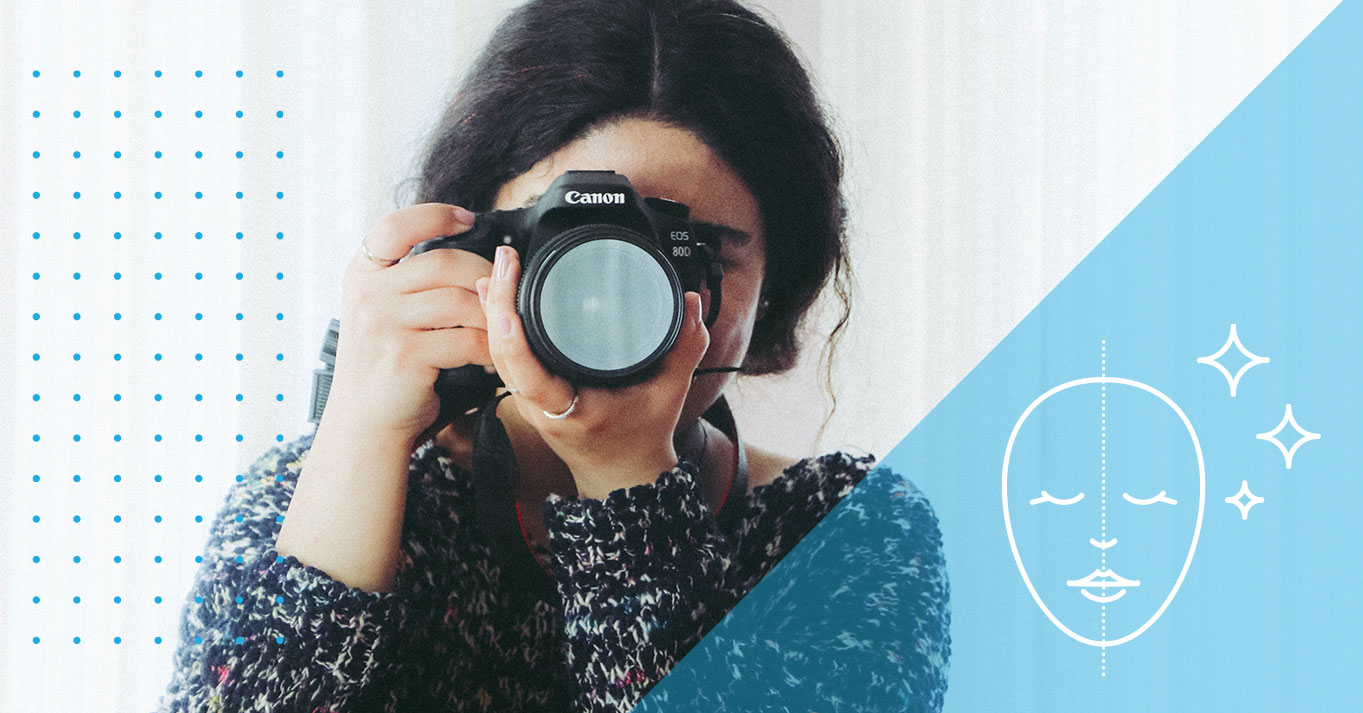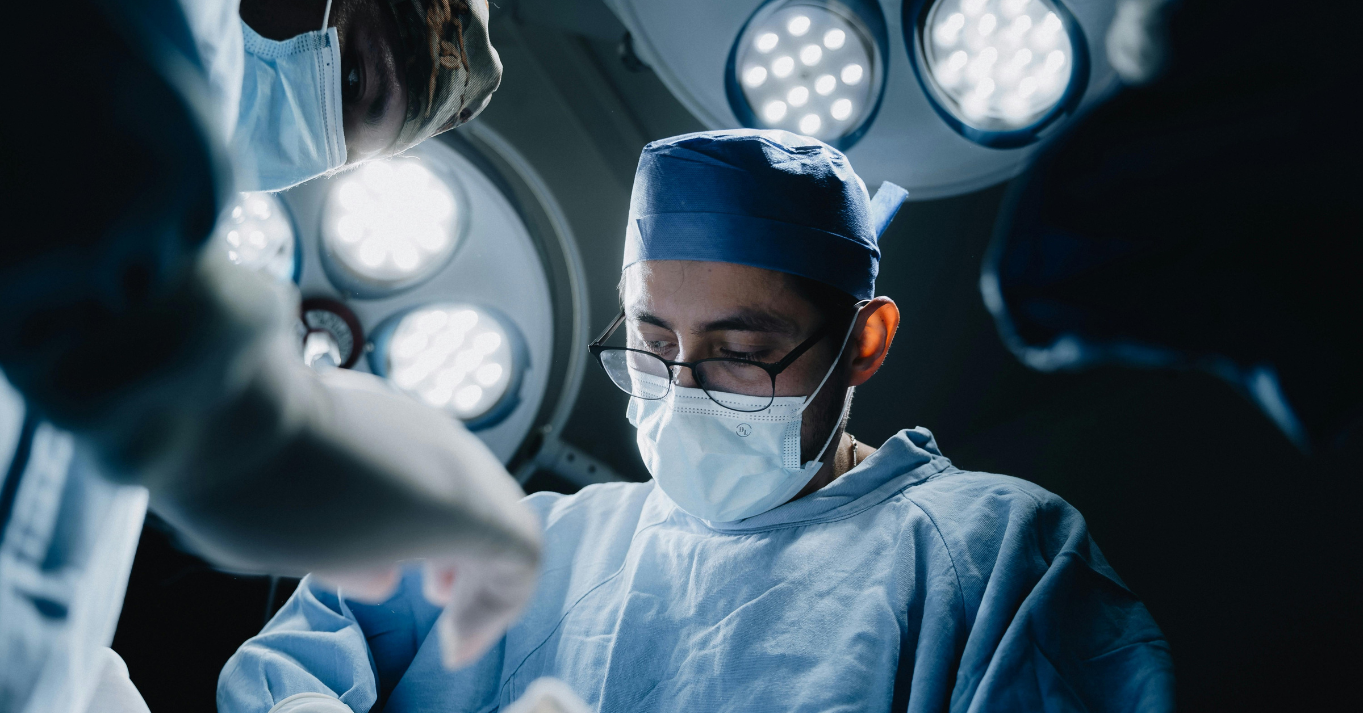
Before and After Pictures – How to Showcase Your Work as an Aesthetic Practitioner
As an aesthetic practitioner, your goal is to help your clients look and feel their best. But how do you showcase the results of your treatments to potential clients? This is where before and after pictures come in. Before and after pictures are a powerful tool that can help demonstrate the effectiveness of your services. These photos provide visual evidence of the changes that can be achieved with your treatments, which is exactly what potential clients want to see. In our experience, some of the most engaging content, as well as one of the most visited pages on your website, is the before and after gallery. In this article, we will discuss how to take high-quality before and after pictures that accurately represent your work and attract the right clients.
Consistent Lighting is Key
Consistent lighting is one of the most important aspects of taking high-quality before and after pictures. You want to make sure that the lighting is consistent between the before and after shots, so that the changes in appearance are not due to different lighting conditions. It’s ideal to always use the same camera, typically a DSLR camera, with the same lighting setup for each photo. We suggest having one designated area in your practice for your before and after photography. For your lighting setup, we suggest having a warm kelvin bulb or filter to warm the skin tone and make it seem less cold. We recommend avoiding fluorescent bulbs, as they typically produce a lower kelvin temperature, which makes the image feel cold.
Helpful Product: Neewer Ring Light
The Neewer Ring Light is a highly versatile and useful tool for capturing high-quality before and after pictures. It features adjustable brightness and color temperature settings, making it easy to customize the lighting for each individual patient. The even and diffused light that the ring light provides can help to eliminate harsh shadows and create a soft and flattering effect on the skin.
One of the key benefits of using a ring light for before and after pictures is its ability to produce a catchlight in the subject’s eyes. Catchlights are reflections of the light source in the subject’s eyes, and they can add a sense of depth and dimensionality to the image. This effect can help to make the eyes appear more vibrant and engaging in the photo, which can be especially helpful for cosmetic treatments around the eyes.
Another advantage of the Neewer Ring Light is its versatility. It can be mounted on a tripod or used handheld, depending on the needs of the practitioner and the patient. This flexibility can be especially useful for capturing before and after pictures of smaller procedures like Botox or filler injections.
Follow this link for amazon’s best selling ring light.
Consistent Positioning and Clothing
Consistent positioning and clothing are crucial components of capturing high-quality before and after pictures. It’s important to position the patient in the same way in both the before and after photos to make it easier for potential clients to compare and see the difference the treatment has made. Consistent positioning can be achieved by using a set of guidelines, such as having the patient face the camera straight on, with their arms at their sides and their feet shoulder-width apart.
Choosing similar clothing for the before and after pictures is also important. Clothing can have a significant impact on the appearance of the patient, and choosing similar clothing for both pictures can help to avoid any distractions or discrepancies in the images. It’s a good idea to choose clothing that is form-fitting and neutral in color to avoid any distractions and make it easier for the viewer to focus on the changes in the patient’s appearance.
It’s important to communicate these guidelines to your patients ahead of time and provide them with clear instructions on what to wear and how to pose for the pictures. This can help to ensure that both the before and after photos accurately represent the results of the treatment and can be used effectively for marketing and promotional purposes.
In addition to clothing and positioning, it’s also important to pay attention to the patient’s facial expressions in the photos. Encourage your patients to have a neutral expression in both the before and after pictures to avoid any distractions and make it easier for the viewer to focus on the changes in their appearance.
Helpful Product: Manfrotto Tripod
The Manfrotto Tripod is a highly recommended tool for capturing consistent and high-quality before and after pictures. A tripod is an essential piece of equipment for any aesthetic practitioner who wants to ensure that their pictures are consistent and accurately represent the results of their treatments. The Manfrotto Tripod is a great option, as it features adjustable legs and a quick-release plate for easy camera mounting.
The adjustable legs of the Manfrotto Tripod make it easy to adjust the height and angle of the camera to capture the perfect shot. The quick-release plate allows for easy and secure camera mounting, ensuring that the camera is stable and does not move during the picture-taking process. This can be especially important when taking before and after pictures of larger procedures like breast augmentations or tummy tucks.
Using a tripod can also help to eliminate any camera shake, which can result in blurry or distorted images. This is especially important when taking close-up shots of facial procedures like Botox or filler injections, where even the slightest camera shake can result in an unflattering image.
Follow this link for a highly rated Tripod on Amazon.
Consider the Treatment and Procedure
When it comes to capturing high-quality before and after pictures, it’s important to consider the type of treatment or procedure that is being performed. Different procedures may require different lighting setups and equipment to capture the best possible images.
For larger procedures such as breast augmentations or tummy tucks, it’s important to have a warm-toned and even lighting setup. Two studio light boxes on stands can provide the ideal setup for these types of procedures, as they can help to eliminate any harsh shadows and create a warm, flattering tone on the patient’s skin. The even lighting provided by studio light boxes can also help to ensure that the before and after pictures accurately represent the results of the treatment.
For procedures that are up close, such as facial procedures like Botox or IPL, a high-quality on-camera ring light can provide enough light for quality results. Ring lights are highly versatile and can be used for a wide range of procedures. They can help to eliminate any harsh shadows and create a soft, flattering effect on the patient’s skin. The circular shape of the ring light can also help to produce a catchlight effect in the patient’s eyes, which can make them appear more vibrant and engaging in the photo.
In addition to lighting, it’s also important to consider the background and surroundings when taking before and after pictures. A plain, neutral-colored background can help to eliminate any distractions and make it easier for the viewer to focus on the changes in the patient’s appearance. Using a seamless background paper, such as the Savage Seamless Background Paper, can help to achieve a clean and professional look in your before and after pictures.
Helpful Product: Savage Seamless Background Paper
Savage Seamless Background Paper is a highly recommended product for capturing high-quality before and after pictures. A plain and neutral background can help to eliminate any distractions and make it easier for the viewer to focus on the changes in the patient’s appearance. The Savage Seamless Background Paper is a great option, as it is available in a wide range of neutral colors and provides a smooth and consistent surface for capturing before and after pictures.
The seamless background paper is made of high-quality materials and is available in various sizes, making it a versatile option for aesthetic practitioners. The paper can be easily mounted on a background stand, and it can be quickly swapped out for different colors to accommodate different procedures or treatments.
Using a seamless background paper can also help to create a more professional and consistent look in your before and after pictures. By using a consistent backdrop for all of your pictures, you can help to create a cohesive and unified gallery that accurately represents the quality of your work.
When choosing a color for your seamless background paper, it’s important to choose a neutral color that won’t distract from the patient or the changes in their appearance. White, gray, and beige are popular color choices, as they provide a clean and neutral look that is suitable for a wide range of procedures and treatments.
Here is Amazon’s choice for seamless background paper with a stand.
Get Consent for Before and After Photos
Getting patient consent for before and after photos is a crucial component of capturing high-quality images in an ethical and responsible manner. Before and after pictures should never be used to guarantee results or mislead clients. Instead, they should be used as a tool to showcase the effectiveness of your treatments and to help clients make an informed decision.
Having a standard operating procedure for collecting patient consent for before and after photos is essential for ensuring that you are using these images in an ethical and responsible manner. This procedure should include clear guidelines for when and how to collect consent, as well as how to use the photos in your marketing and promotional materials.
When collecting patient consent for before and after photos, it’s important to clearly explain the purpose of the photos and how they will be used. You should also provide patients with the opportunity to ask questions and express any concerns they may have about the use of their photos.
To protect the privacy of your patients, it’s also important to consider the use of photo release forms. These forms can help to ensure that patients understand how their photos will be used and provide a legal record of their consent.
It’s also important to be transparent about the results that can be achieved with your treatments. Before and after photos should be used to showcase the effectiveness of your treatments, but they should never be used to guarantee specific results or mislead clients.
Use Photos Ethically and Responsibly
Getting patient consent for before and after photos is an important aspect of capturing high-quality images in an ethical and responsible manner. Before and after pictures should never be used to guarantee specific results or mislead clients. Instead, they should be used as a tool to showcase the effectiveness of your treatments and to help clients make an informed decision.
To use before and after pictures ethically and responsibly, it’s important to consider the privacy of your patients. Photoshopping out identifying marks on your clients, such as tattoos, birthmarks, or scars, can help to protect their privacy even further. This can be especially important for clients who may be self-conscious about their appearance or who may not want to be identified in promotional materials.
When photoshopping images, it’s important to do so in a way that accurately represents the results of the treatment. Any alterations to the image should be done in a way that does not misrepresent the quality of the work or the results achieved.
In addition to photoshopping images, it’s also important to consider the use of photo release forms. These forms can help to ensure that patients understand how their photos will be used and provide a legal record of their consent.
Helpful Product: Adobe Photoshop and Lightroom
Adobe Photoshop and Lightroom are powerful editing tools that can be used to enhance the quality of before and after pictures. Photoshop is a professional-level photo editing software that offers a wide range of features for retouching and adjusting images. It can be used to remove blemishes, smooth out skin, and make color adjustments. Lightroom is a photo management and editing software that allows for batch editing, making it a great option for editing large numbers of before and after pictures at once.
When using Photoshop and Lightroom to edit before and after pictures, it’s important to use them ethically and responsibly. Any adjustments made should accurately represent the results that can be achieved with the treatment or procedure, and not be used to mislead or exaggerate the changes.
Some of the common editing techniques used in Photoshop and Lightroom for before and after pictures include:
- Cropping: Cropping can be used to focus the viewer’s attention on the areas of the photo that have changed the most. This can help to highlight the results of the treatment or procedure.
- Color Correction: Color correction can be used to adjust the color temperature and color balance of the photo. This can help to create a more accurate representation of the patient’s skin tone.
- Retouching: Retouching can be used to remove blemishes, smooth out skin, and make other minor adjustments. However, it’s important to use retouching sparingly and to avoid creating an unrealistic representation of the results.
- Contrast Adjustment: Contrast adjustment can be used to enhance the highlights and shadows in the photo, making it more visually appealing.
Adobe Photoshop and Lightroom can be powerful tools for enhancing the quality of before and after pictures. However, it’s important to use them ethically and responsibly, and to avoid exaggerating or misrepresenting the results that can be achieved with your treatments or procedures.
In conclusion, before and after pictures are an essential component of any aesthetic practitioner’s marketing efforts. They provide visual evidence of the results that can be achieved with your treatments and help set realistic expectations for potential clients. To capture high-quality before and after pictures, it’s important to follow best practices such as consistent lighting, positioning, and clothing, as well as obtaining consent and using photos ethically and responsibly. By utilizing helpful products like the Neewer Ring Light, Manfrotto Tripod, and Savage Seamless Background Paper, practitioners can capture high-quality images that accurately represent their work and attract the right clients. With careful planning and attention to detail, before and after pictures can be a powerful tool to showcase your work and help clients feel confident in their decision to choose your services.
Check out our blog page for more news. If you’d like to chat with us about how we can help grow your practice, schedule a FREE 30 min consultation today!



